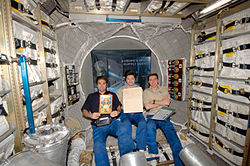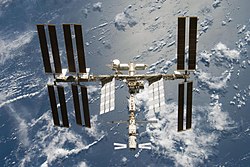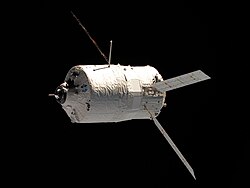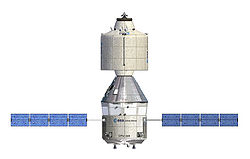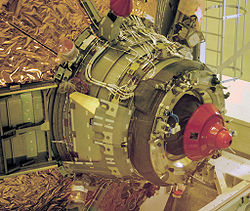Orion Service Module
Orion will be the most advanced spacecraft ever designed and carry astronauts farther into space than ever before. It will sustain astronauts during space travel and provide safe re-entry from deep space and emergency abort capability. Orion will be launched by NASA's Space Launch System (SLS), a heavy-lift rocket that will provide an entirely new capability for human exploration beyond low Earth orbit. Designed to be flexible for launching spacecraft for crew and cargo missions, SLS will enable new missions of exploration and expand human presence across the solar system.
The service module of the Orion spacecraft will provide support to the crew module from launch through separation prior to atmospheric re-entry.Relevante Bilder
Relevante Artikel
Automated Transfer VehicleDas Automated Transfer Vehicle war ein unbemannter, nicht wiederverwendbarer Weltraumfrachter, der Nachschub wie Nahrung, Wasser, Ausrüstung, Stickstoff, Sauerstoff und Treibstoffe zur Internationalen Raumstation (ISS) transportierte. Nach dem Andocken wurde er zusätzlich für Ausweichmanöver der Raumstation vor eventuell heranfliegenden Trümmern und für die Anhebung der Umlaufbahn, das so genannte „Reboost“, der ISS benötigt. Zu diesem Zweck war das ATV mit einem eigenen wiederzündbaren Antrieb ausgestattet. Das ATV wurde im Auftrag der Europäischen Weltraumorganisation (ESA) von der Raumfahrtfirma EADS Astrium Space Transportation in Bremen gebaut und mit Hilfe einer Ariane-5-ES-ATV-Rakete gestartet. Nach dem ersten Start im März 2008 fanden bis zum Programmende im Februar 2015 vier weitere Flüge statt. .. weiterlesen


